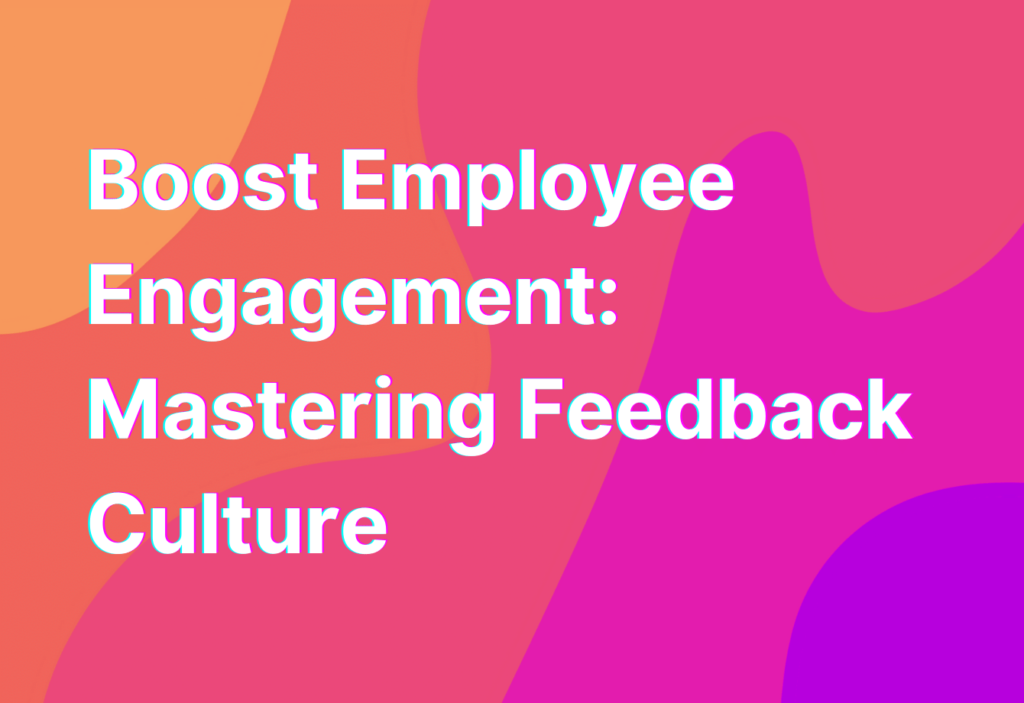Boost Employee Engagement: Mastering Feedback Culture
Hey there, remote work enthusiasts! It’s Ashley here, your go-to gal for all things remote work. Today, I want to talk about a crucial aspect of creating a thriving remote team: feedback culture. As a marketing manager with 10 years of remote work experience in the tech industry, I’ve seen firsthand how feedback can make or break a team’s success. So, let’s dive in and discover how to boost employee engagement through mastering feedback culture!
The Power of Feedback
Feedback is like the secret sauce that adds flavor and zest to your remote team. It’s not just about pointing out mistakes or areas for improvement; it’s about fostering a culture of growth and continuous learning. When employees receive regular feedback, they feel valued, supported, and motivated to perform at their best.
According to a study by Gallup, employees who receive regular feedback have 13% higher engagement levels compared to those who don’t. So, if you want to supercharge your team’s engagement, it’s time to make feedback a top priority.
Creating a Feedback-Friendly Environment
Now that we understand the importance of feedback, let’s explore how to create a feedback-friendly environment in your remote team. Here are some tips to get you started:
- Set the Stage: Begin by clearly communicating the purpose and benefits of feedback to your team. Let them know that feedback is not about criticism, but about growth and improvement.
- Lead by Example: As a leader, it’s essential to model the behavior you want to see. Be open to receiving feedback yourself and demonstrate how to give constructive feedback to others.
- Encourage Regular Check-Ins: Schedule regular one-on-one meetings with your team members to discuss their progress, challenges, and goals. This provides a dedicated space for feedback and ensures it doesn’t get overlooked.
- Provide Timely Feedback: Don’t wait for annual performance reviews to provide feedback. Instead, offer timely feedback as soon as possible, so it’s fresh in everyone’s minds.
- Make it Two-Way: Feedback shouldn’t be a one-way street. Encourage your team members to share their thoughts, ideas, and suggestions. This fosters a culture of open communication and collaboration.
The Art of Giving Feedback
Now that you’ve created a feedback-friendly environment, let’s talk about the art of giving feedback. Here are some best practices to keep in mind:
- Be Specific: When giving feedback, be specific about what you observed and the impact it had. Avoid vague statements and provide concrete examples.
- Focus on Behavior: Instead of criticizing someone’s character or personality, focus on their behavior or actions. This helps to keep the feedback constructive and avoids personal attacks.
- Use the Sandwich Technique: The sandwich technique involves sandwiching constructive feedback between positive comments. This helps to soften the impact of criticism and keeps the conversation balanced.
- Be Sincere: Authenticity is key when giving feedback. Be genuine in your praise and constructive in your criticism. Your team members will appreciate your honesty and trust your intentions.
- Offer Solutions: Instead of just pointing out problems, offer suggestions for improvement. This shows that you’re invested in their growth and willing to support them.
Embracing Feedback as a Team
Feedback shouldn’t be limited to just managers giving feedback to their team members. It’s essential to create a culture where everyone feels comfortable giving and receiving feedback. Here’s how you can encourage feedback within your remote team:
- Peer Feedback: Encourage team members to provide feedback to their peers. This promotes a sense of collaboration and helps individuals learn from each other.
- Anonymous Feedback: Consider implementing anonymous feedback channels, such as surveys or suggestion boxes. This allows team members to share their thoughts without fear of judgment or repercussions.
- Feedback Training: Provide training on giving and receiving feedback effectively. This equips your team with the necessary skills to engage in constructive conversations.
- Celebrate Feedback: Recognize and celebrate instances where feedback has led to positive outcomes. This reinforces the value of feedback and encourages more open communication.
- Continuous Improvement: Feedback should be an ongoing process. Regularly assess and refine your feedback culture to ensure it remains effective and aligned with your team’s needs.
Wrapping Up
And there you have it, folks! By mastering feedback culture, you can boost employee engagement and create a thriving remote team. Remember, feedback is a powerful tool for growth and continuous improvement. So, set the stage, lead by example, and embrace feedback as a team. Your remote team will thank you!
If you’re interested in learning more about how remote work can improve employee engagement, check out our Health and Wellness page. It’s filled with valuable insights and tips to help you create a healthy and engaged remote team. Happy reading!


